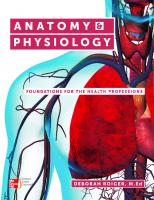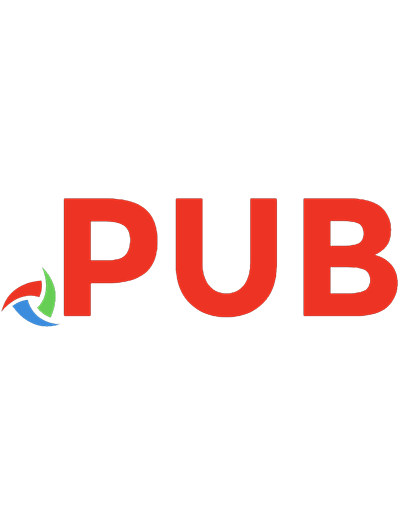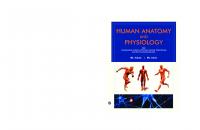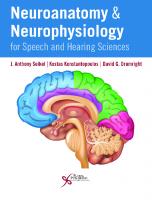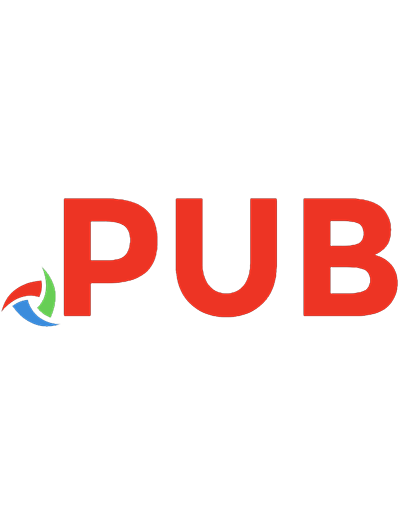Foundations of speech and hearing : anatomy and physiology 2016030878, 9781597569590, 1597569593
690 169 9MB
English Pages [361] Year 2018
Table of contents :
Contents
Preface
Acknowledgments
1
Introduction
Reference
2 Breathing and Speech Production
Introduction
Fundamentals of Breathing
Anatomical Bases of Breathing
Skeletal Superstructure
Breathing Apparatus and Its Subdivisions
Forces and Movements of Breathing
Forces of Breathing
Realization of Passive and Active Forces
Movements of Breathing
Adjustments of theBreathing Apparatus
Pulmonary Apparatus
Chest Wall
Pulmonary Apparatus-Chest Wall Unit
Output Variables of Breathing
Volume
Pressure
Shape
Neural Control of Breathing
Neural Substrates
Control of Tidal Breathing
Control of Special Acts of Breathing
Ventilation and Gas ExchangeDuring Tidal Breathing
Breathing and Speech
Production
Breathing in Extended
Steady Utterances
Breathing in Running
Speech Activities
Body Position and
Speech Breathing
Extended Steady Utterances in
the Supine Body Position
Running Speech Activities in
the Supine Body Position
Speech Breathing in Other Body Positions
Ventilation, Gas Exchange,
and Speech Breathing
Drive to Breathe and
Speech Breathing
Cognitive-Linguistic Factors
and Speech Breathing
Conversational Interchange
and Speech Breathing
Body Type and Speech Breathing
Development and Speech Breathing
Age and Speech Breathing
Sex and Speech Breathing
Review
References
3 Laryngeal Function and
Speech Production
Introduction
Fundamentals of
Laryngeal Function
Anatomy of the Laryngeal Apparatus
Skeleton
Laryngeal Joints
Internal Topography
Forces and Movements of the Laryngeal Apparatus
Forces of the Laryngeal Apparatus
Movements of the Interior of the Larynx
Control Variables of
Laryngeal Function
Laryngeal Opposing Pressure
Laryngeal Airway Resistance
Glottal Size and Configuration
Stiffness of the Vocal Folds
Effective Mass of the Vocal Folds
Neural Substrates of
Laryngeal Control
Laryngeal Functions
Degree of Coupling Between the Trachea and Pharynx
Protection of the Pulmonary Airways
Containment of the Pulmonary Air Supply
Sound Generation
Laryngeal Function in Speech Production
Transient Utterances
Sustained Utterances
Turbulence Noise Production
Voice Production
Running Speech Activities
Fundamental Frequency
Sound Pressure Level
Spectrum
Development and Laryngeal Function in Speech Production
Age and Laryngeal Function
in Speech Production
Sex and Laryngeal Function
in Speech Production
Review
References
4 Velopharyngeal-Nasal Function and Speech Production
Introduction
Fundamentals of Velopharyngeal-Nasal Function
Anatomy of the Velopharyngeal-Nasal Apparatus
Skeletal Superstructure
Pharynx
Velum
Nasal Cavities
Outer Nose
Forces and Movements of the Velopharyngeal-Nasal Apparatus
Forces of the Velopharyngeal-Nasal Apparatus
Movements of the Velopharyngeal-Nasal Apparatus
Adjustments of the Velopharyngeal-Nasal Apparatus
Coupling Between the Oral and Nasal Cavities
Coupling Between the Nasal Cavities and Atmosphere
Control Variables of
Velopharyngeal-Nasal Function
Velopharyngeal-Nasal Airway Resistance
Velopharyngeal Sphincter Compression
Velopharyngeal-Nasal Acoustic Impedance
Neural Substrates of Velopharyngeal-Nasal Control
Ventilation and Velopharyngeal-Nasal Function
Velopharyngeal-Nasal Function and Speech Production
Velopharyngeal-Nasal Function and Sustained Utterances
Velopharyngeal-Nasal Function and Running Speech Activities
Gravity and Velopharyngeal-Nasal
Function in Speech Production
Development of Velopharyngeal-Nasal Function
in Speech Production
Age and Velopharyngeal-Nasal
Function in Speech Production
Sex and Velopharyngeal-Nasal
Function in Speech Production
Review
References
5 Pharyngeal-Oral Function and Speech Production
Introduction
Fundamentals of Pharyngeal-Oral Function
Anatomy of the Pharyngeal-Oral Apparatus
Skeleton
Temporomandibular Joints
Temporomandibular Joint Movements
Internal Topography
Forces and Movements of the Pharyngeal-Oral Apparatus
Forces of the Pharyngeal-Oral Apparatus
Movements of the Pharyngeal-Oral Apparatus
Adjustments of the Pharyngeal-Oral Apparatus
Adjustments of the Pharynx
Adjustments of the Mandible
Adjustments of the Tongue
Adjustments of the Lips
Control Variables of Pharyngeal-Oral Function
Pharyngeal-Oral Lumen Size and Configuration
Pharyngeal-Oral Structural Contact Pressure
Pharyngeal-Oral Airway Resistance
Pharyngeal-Oral Acoustic Impedance
Neural Substrates of Pharyngeal-Oral Control
Pharyngeal-Oral Functions
Degree of Coupling Between the Oral Cavity and Atmosphere
Chewing
Swallowing
Sound Generation and Filtering
Pharyngeal-Oral Function
in Speech Production
The Speech Production Code
Vowel Coding Scheme
Diphthong Coding Scheme
Consonant-Coding Scheme
The Speech Production Stream
Coarticulation
Traditional Theory of Coarticulation (Feature Spreading)
Articulatory Phonology or Gesture Theory
Development and Pharyngeal-Oral
Function in Speech Production
Age and Pharyngeal-Oral
Function in Speech Production
Sex and Pharyngeal-Oral
Function in Speech Production
Review
References
6 Anatomy and Physiology
of the Auditory System
Introduction
Temporal Bone
Peripheral Anatomy of the Ear
Outer Ear (Conductive Mechanism)
Pinna (Auricle)
External Auditory Meatus (External Auditory Canal)
Tympanic Membrane (Eardrum)
Middle Ear
(Conductive Mechanism)
Chambers of the Middle Ear
Ossicles and Associated Structures
Ligaments and Muscles
of the Middle Ear
Auditory (Eustachian) Tube
Medial and Lateral Wall View of Middle Ear: A Summary
Transmission of Sound Energy by the Conductive Mechanism
Inner Ear (Sensorineural Mechanism)
Semicircular Canals
Vestibule
Cochlea
Scalae
Basilar Membrane and Organ of Corti
Hair Cells
Traveling Waves
Auditory Nerve and Auditory Pathways (Neural Mechanism)
Auditory Nerve
Auditory Pathways
Review
References
7 Brain Structures and Mechanisms for Speech,
Language, and Hearing
Introduction
The Nervous System: An Overview
and Concepts
Central Versus Peripheral
Nervous System
Anatomical Planes and Directions
White Versus Gray Matter, Tracts Versus Nuclei,
Nerves Versus Ganglia
Gray Matter and Nuclei
White Matter and Fiber Tracts
Ganglia
Efferent and Afferent
Lateralization and
Specialization of Function
Cerebral Hemispheres
and White Matter
Cerebral Hemispheres
Frontal Lobe
Parietal Lobe
Temporal Lobe
Occipital Lobe
Insula
Limbic System (Limbic Lobe)
Cerebral White Matter
Association Tracts
Striatal Tracts
Commissural Tracts
Descending Projection Tracts
Ascending Projection Tracts
Subcortical Nuclei
and Cerebellum
Basal Ganglia
Thalamus
Cerebellum
Brainstem and Cranial Nerves
Surface Features of the Brainstem: Ventral View
Ventral Surface of Midbrain
Ventral Surface of Pons
Ventral Surface of Medulla
Surface Features of the Brainstem: Dorsal View
Dorsal Surface of Midbrain
Dorsal Surface of Pons
Dorsal Surface of Medulla
Cranial Nerves and Associated Brainstem Nuclei
Cranial Nerve I (Olfactory)
Cranial Nerve II (Optic)
Cranial Nerve III (Oculomotor)
Cranial Nerve IV (Trochlear)
Cranial Nerve V (Trigeminal)
Cranial Nerve VI (Abducens)
Cranial Nerve VII (Facial)
Cranial Nerve VIII
(Auditory-Vestibular Nerve)
Cranial Nerve IX (Glossopharyngeal)
Cranial Nerve X (Vagus)
Cranial Nerve XI (Spinal Accessory Nerve)
Cranial Nerve XII (Hypoglossal)
Cortical Innervation
Patterns
Spinal Cord and Spinal Nerves
Spinal Cord
Spinal Nerves
Nervous System Cells
Glial Cells
Neurons
Cell Body (Soma)
Axon and Terminal Button
Synapse
Resting Potential, Action Potential, and Neurotransmitters
Resting Potential
Action Potential
Synaptic Transmission and Neurotransmitters
Neuromuscular Junction
Meninges, Ventricles,
Blood Supply
Meninges
Dura Mater
Arachnoid Mater
Pia Mater
Meninges and Clinically Relevant Spaces
Ventricles
Lateral Ventricles
Third Ventricle
Cerebral Aqueduct, Fourth Ventricle,
and Other Passageways for CSF
Production, Composition,
and Circulation of CSF
Blood Supply of Brain
Anterior Circulation
Posterior Circulation
Circle of Willis
MCA and Blood Supply to the Dominant Hemisphere
Blood-Brain Barrier
Review
References
8 Swallowing
Introduction
Anatomy
Breathing, Laryngeal, Velopharyngeal-Nasal, and
Pharyngeal-Oral Structures
Esophagus
Stomach
Forces and Movements
of Swallowing
Oral Preparatory Phase
Oral Transport Phase
Pharyngeal Transport Phase
Esophageal Transport Phase
Overlap of Phases
Breathing and Swallowing
Neural Control of Swallowing
Role of the Peripheral Nervous
System in Swallowing
Role of the Central Nervous
System in Swallowing
Variables That
Influence Swallowing
Bolus Characteristics
and Swallowing
Consistency
Volume
Taste and Temperature
Swallowing Mode
Single Versus Sequential Swallows
Cued Versus Uncued Swallows
Body Position and Swallowing
Development and Swallowing
Age and Swallowing
Sex and Swallowing
Review
References
Author Index
Subject Index

![Fundamentals of Anatomy and Physiology of Speech, Language, and Hearing [1 ed.]
9781635507201, 9781635504682](https://dokumen.pub/img/200x200/fundamentals-of-anatomy-and-physiology-of-speech-language-and-hearing-1nbsped-9781635507201-9781635504682.jpg)
![Anatomy & physiology for speech, language, and hearing [Sixth edition.]
9781635503005, 1635503000](https://dokumen.pub/img/200x200/anatomy-amp-physiology-for-speech-language-and-hearing-sixth-edition-9781635503005-1635503000.jpg)

